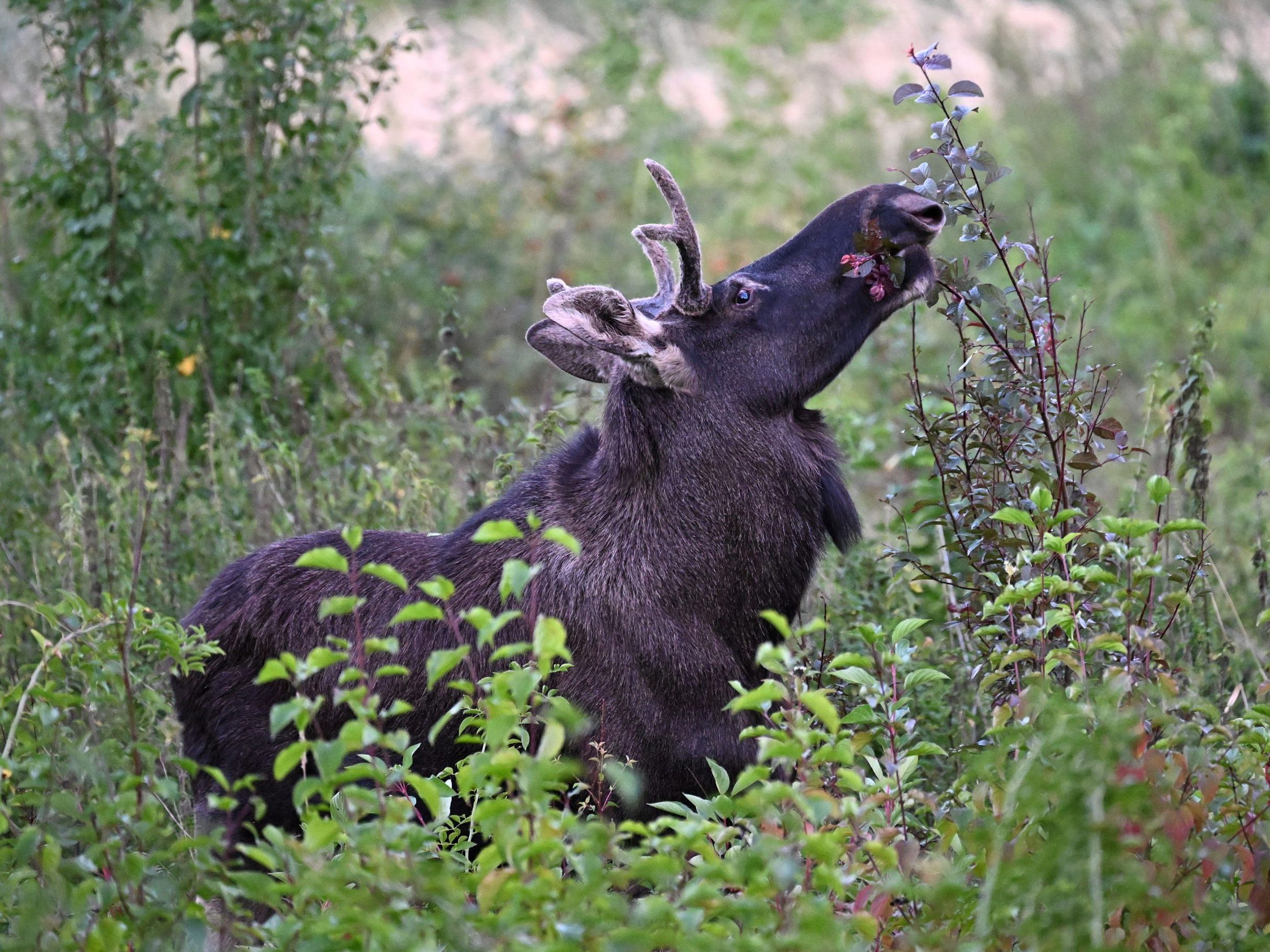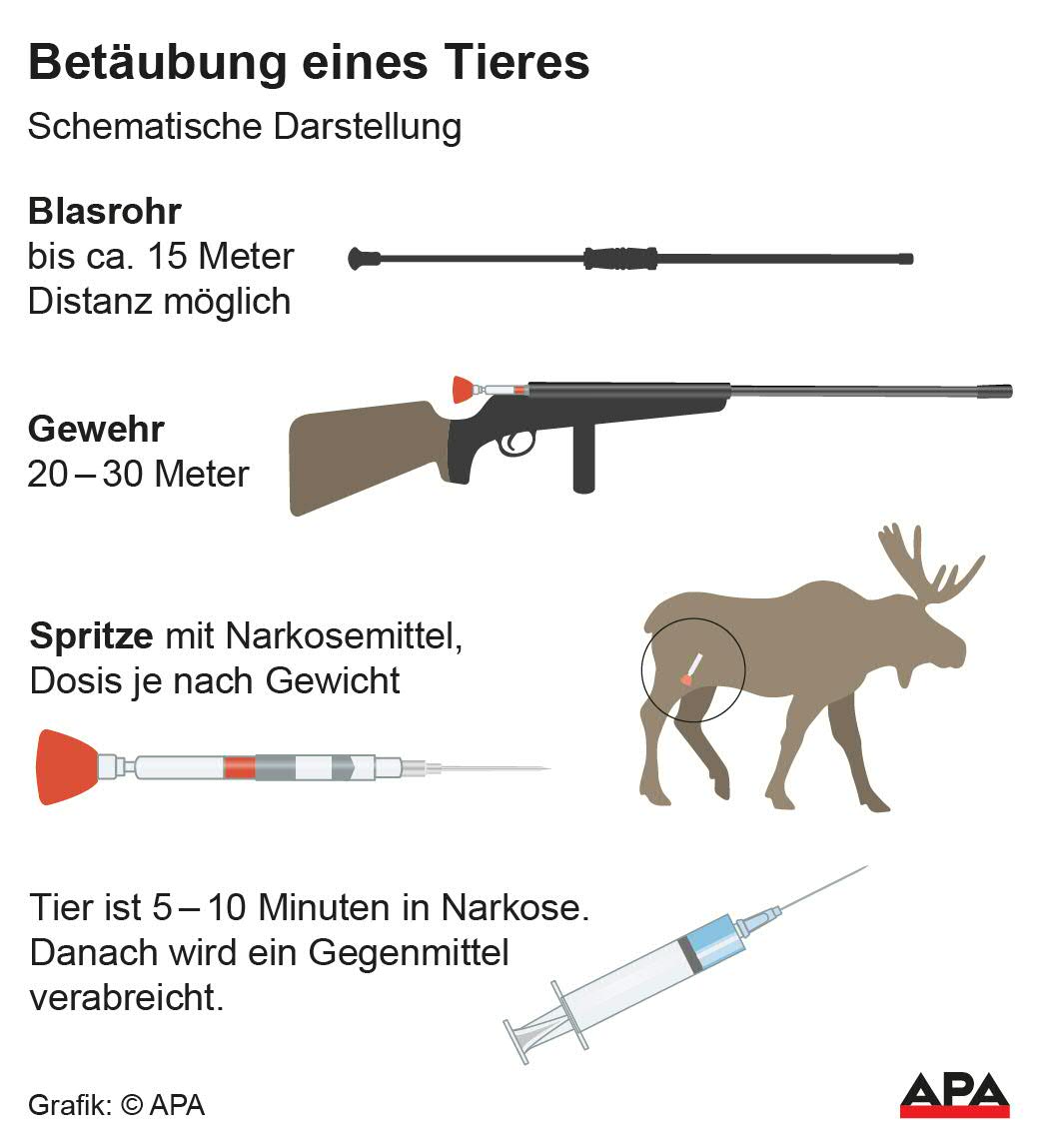Anesthesia, Infusions: This is How the Transport of Moose "Emil" Went

Not only elk "Emil," but other large animals also sometimes need to be sedated - to transport or examine them. In "Emil's" case, experienced wildlife veterinarians were at work, as Claudia Bieber, head of the Research Institute for Wildlife Biology and Ecology at the University of Veterinary Medicine in Vienna, explained. He was sedated without any issues and transported to the Bohemian Forest, where there is an elk population in the nearby Czech Šumava National Park.
Drones Followed Elk "Emil"
"Emil" was sedated with a rifle, "it worked well," said Bieber, who was in constant contact with the veterinarians. Subsequently, the elk was tracked with a thermal imaging camera and drones to locate him when he finally lay down. "Then he was given infusions, his oxygen saturation was measured, and blood and urine samples were taken," Bieber explained the procedure. These would be examined to gain insights into the health and origin of the wanderer.
While still lying down, firefighters brought "Emil" to the transporter. After about an hour, he was given the antidote to the anesthesia. "He was very calm, and a veterinarian was always present." It was fortunate that no spectators were present, "that would have complicated the anesthesia," if it had been loud, for example, due to applause, as an animal naturally reacts. "Then it also has to fight against this stress, which we were somewhat afraid of," said Bieber.

When sedating large animals, a rifle is fired from 20 to 30 meters, described veterinarian Doreen Kendel from the Wels Animal Clinic. To sedate a wild animal, Kendel would rely on the "Hellabrunn mixture," a solution of the anesthetics Xylazine and Ketamine, depending on the size of the animal, one to two milliliters, for a young animal like "Emil," a maximum of one and a half milliliters. It is very important to wait with the transport until the animal is standing again. "This is also done in the zoo, the animals are only transported standing so that they can balance themselves," otherwise, it could lead to falls and subsequent injuries in curves or during abrupt driving maneuvers.
"He Played Along Perfectly"
Upon arriving in the Bohemian Forest, "Emil" calmly got out of the transporter, "not in panic, he played along perfectly," said Bieber. He had already licked some moss and urinated. For 30 days, "Emil" can now be tracked with the GPS tracker, then the battery will be empty. A longer observation would have required a lengthy research application, which was not possible in the short time, explained the scientist.
The institute director hopes that the elk moves in the right direction towards his conspecifics in the nearby national park in the Czech Republic. "Emil's" velvet, a velvety skin around the antlers, had died off, which happens shortly before the rut. "During the rut, interest in the females awakens, and we hope that he orients himself in the right direction through the scent," said Bieber, emphasizing that the veterinarians would not have shot if it had been a danger to "Emil," after all, they had sworn an oath. However, there seemed to be no option to move him out of the highway interchange otherwise.
(APA/Red)
This article has been automatically translated, read the original article here.





